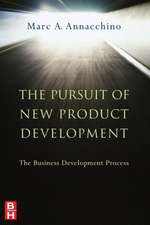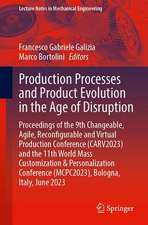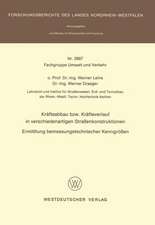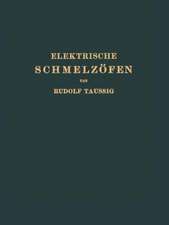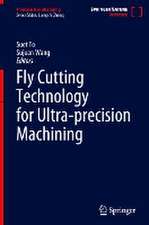Practical Guide To Designed Experiments: A Unified Modular Approach: Mechanical Engineering
Autor Paul D. Funkenbuschen Limba Engleză Hardback – 12 noi 2004
Practical Guide to Designed Experiments: A Unified Modular Approach bridges that gap, presenting the essential material in a manner that permits rapid application to practical problems but also provides the structure and understanding necessary for long-term growth. It covers two-level and three-level full and fractional factorial design and also includes the L12 and L18 designs popularized by Taguchi. The author describes the role and selection of the system response for measurement and optimization and discusses both conventional and Taguchi approaches, noting their similarities and differences.
Clearly written and well organized, this text shows how the components of experimental design fit and work together. Offering an abundance of examples, case studies, and practice problems, it is highly suited to anyone with a basic science or engineering background but little or no previous exposure to matrix experiments or other elements of planned experimentation.
| Toate formatele și edițiile | Preț | Express |
|---|---|---|
| Paperback (1) | 430.21 lei 6-8 săpt. | |
| CRC Press – 30 sep 2021 | 430.21 lei 6-8 săpt. | |
| Hardback (1) | 891.36 lei 6-8 săpt. | |
| CRC Press – 12 noi 2004 | 891.36 lei 6-8 săpt. |
Din seria Mechanical Engineering
- 9%
 Preț: 906.49 lei
Preț: 906.49 lei - 9%
 Preț: 1529.91 lei
Preț: 1529.91 lei - 15%
 Preț: 461.03 lei
Preț: 461.03 lei - 18%
 Preț: 733.36 lei
Preț: 733.36 lei - 15%
 Preț: 698.32 lei
Preț: 698.32 lei - 20%
 Preț: 503.33 lei
Preț: 503.33 lei - 18%
 Preț: 1942.61 lei
Preț: 1942.61 lei - 18%
 Preț: 2363.55 lei
Preț: 2363.55 lei - 18%
 Preț: 1556.66 lei
Preț: 1556.66 lei - 18%
 Preț: 899.92 lei
Preț: 899.92 lei - 12%
 Preț: 297.35 lei
Preț: 297.35 lei - 25%
 Preț: 1431.55 lei
Preț: 1431.55 lei - 18%
 Preț: 1133.77 lei
Preț: 1133.77 lei - 26%
 Preț: 1579.61 lei
Preț: 1579.61 lei - 18%
 Preț: 1413.01 lei
Preț: 1413.01 lei - 18%
 Preț: 1009.21 lei
Preț: 1009.21 lei - 18%
 Preț: 1223.61 lei
Preț: 1223.61 lei - 18%
 Preț: 808.50 lei
Preț: 808.50 lei - 15%
 Preț: 508.88 lei
Preț: 508.88 lei - 29%
 Preț: 1406.88 lei
Preț: 1406.88 lei - 15%
 Preț: 489.26 lei
Preț: 489.26 lei - 18%
 Preț: 1303.34 lei
Preț: 1303.34 lei - 15%
 Preț: 489.26 lei
Preț: 489.26 lei -
 Preț: 376.10 lei
Preț: 376.10 lei - 15%
 Preț: 607.80 lei
Preț: 607.80 lei - 15%
 Preț: 489.26 lei
Preț: 489.26 lei - 18%
 Preț: 907.16 lei
Preț: 907.16 lei - 18%
 Preț: 1283.60 lei
Preț: 1283.60 lei - 30%
 Preț: 857.94 lei
Preț: 857.94 lei - 18%
 Preț: 2370.51 lei
Preț: 2370.51 lei - 18%
 Preț: 1800.94 lei
Preț: 1800.94 lei - 30%
 Preț: 1972.93 lei
Preț: 1972.93 lei - 18%
 Preț: 1401.97 lei
Preț: 1401.97 lei - 18%
 Preț: 893.14 lei
Preț: 893.14 lei - 18%
 Preț: 1941.49 lei
Preț: 1941.49 lei - 29%
 Preț: 1191.13 lei
Preț: 1191.13 lei - 18%
 Preț: 1031.13 lei
Preț: 1031.13 lei - 18%
 Preț: 720.49 lei
Preț: 720.49 lei - 18%
 Preț: 956.88 lei
Preț: 956.88 lei - 15%
 Preț: 461.03 lei
Preț: 461.03 lei - 18%
 Preț: 1679.73 lei
Preț: 1679.73 lei - 18%
 Preț: 1937.66 lei
Preț: 1937.66 lei - 29%
 Preț: 1189.51 lei
Preț: 1189.51 lei - 28%
 Preț: 1580.34 lei
Preț: 1580.34 lei - 27%
 Preț: 993.85 lei
Preț: 993.85 lei
Preț: 891.36 lei
Preț vechi: 1087.01 lei
-18% Nou
Puncte Express: 1337
Preț estimativ în valută:
170.56€ • 178.08$ • 141.16£
170.56€ • 178.08$ • 141.16£
Carte tipărită la comandă
Livrare economică 05-19 aprilie
Preluare comenzi: 021 569.72.76
Specificații
ISBN-13: 9780824753887
ISBN-10: 0824753887
Pagini: 220
Ilustrații: 4 halftones
Dimensiuni: 152 x 229 x 18 mm
Greutate: 0.45 kg
Ediția:New.
Editura: CRC Press
Colecția CRC Press
Seria Mechanical Engineering
ISBN-10: 0824753887
Pagini: 220
Ilustrații: 4 halftones
Dimensiuni: 152 x 229 x 18 mm
Greutate: 0.45 kg
Ediția:New.
Editura: CRC Press
Colecția CRC Press
Seria Mechanical Engineering
Public țintă
UndergraduateCuprins
How a Designed Experiment Works. Fundamental Concepts. Statistical Concepts. Array Design (Two-Level Factors). Selection of the Characteristic Response. Inclusion of Real-World Variability. Additional Array Designs (Three-Level Factors and Modifications). Additional Analysis Techniques. Appendices.
Recenzii
"This book thoroughly explains how the components of experimental design fit and work together using a unified modular approach … The book is clearly written and well organized, offering numerous examples and case studies from many disciplines. … Summing Up: Highly recommended."
- CHOICE, June 2005
"..includes a good balance of quantitative problems and opportunities for reflection on the concepts introduced."
MRS Bulletin, Volume 30, October 2005
"This book is a great introduction to experimental design for anyone who is unfamiliar with it. It covers statistics, fundamental array design, Taguchi techniques and various analysis techniques. [The author] describes a clear summary of each statistical method, citing concrete examples. Homework helps you to check your understanding in each chapter. It is very helpful to use in various fields and occasions. After learning these techniques, I'm sure you'll be a good experiment designer, saving time, cost and energy."
- Akihisa Nishimura, Manager, Fuel Cell Production Engineering, Toyota Motor Corporation
"This book provides an excellent introduction to DOE, allowing a rapid understanding and use of the material for practical problems. It covers the essential techniques and terminology used along with an up-front, worked-out example to illustrate how the DOE are conducted."
-IEEE Electrical Insulation Magazine, Vol. 22, No. 1, 2006
- CHOICE, June 2005
"..includes a good balance of quantitative problems and opportunities for reflection on the concepts introduced."
MRS Bulletin, Volume 30, October 2005
"This book is a great introduction to experimental design for anyone who is unfamiliar with it. It covers statistics, fundamental array design, Taguchi techniques and various analysis techniques. [The author] describes a clear summary of each statistical method, citing concrete examples. Homework helps you to check your understanding in each chapter. It is very helpful to use in various fields and occasions. After learning these techniques, I'm sure you'll be a good experiment designer, saving time, cost and energy."
- Akihisa Nishimura, Manager, Fuel Cell Production Engineering, Toyota Motor Corporation
"This book provides an excellent introduction to DOE, allowing a rapid understanding and use of the material for practical problems. It covers the essential techniques and terminology used along with an up-front, worked-out example to illustrate how the DOE are conducted."
-IEEE Electrical Insulation Magazine, Vol. 22, No. 1, 2006
Descriere
Presenting essential material in a way that permits rapid application to practical problems, this guide provides the structure and understanding necessary for long-term growth. The author first explains how the components fit and work together to make a successful experimental design, then analyzes each component in detail, presenting the various approaches in the form of menus of different strategies and options. Written in a clear and concise manner, the material is presented using a modular or "building block" approach so that readers can see how the entire structure fits together and learn the essential techniques and terminology necessary to develop more complex designs and analyses.


